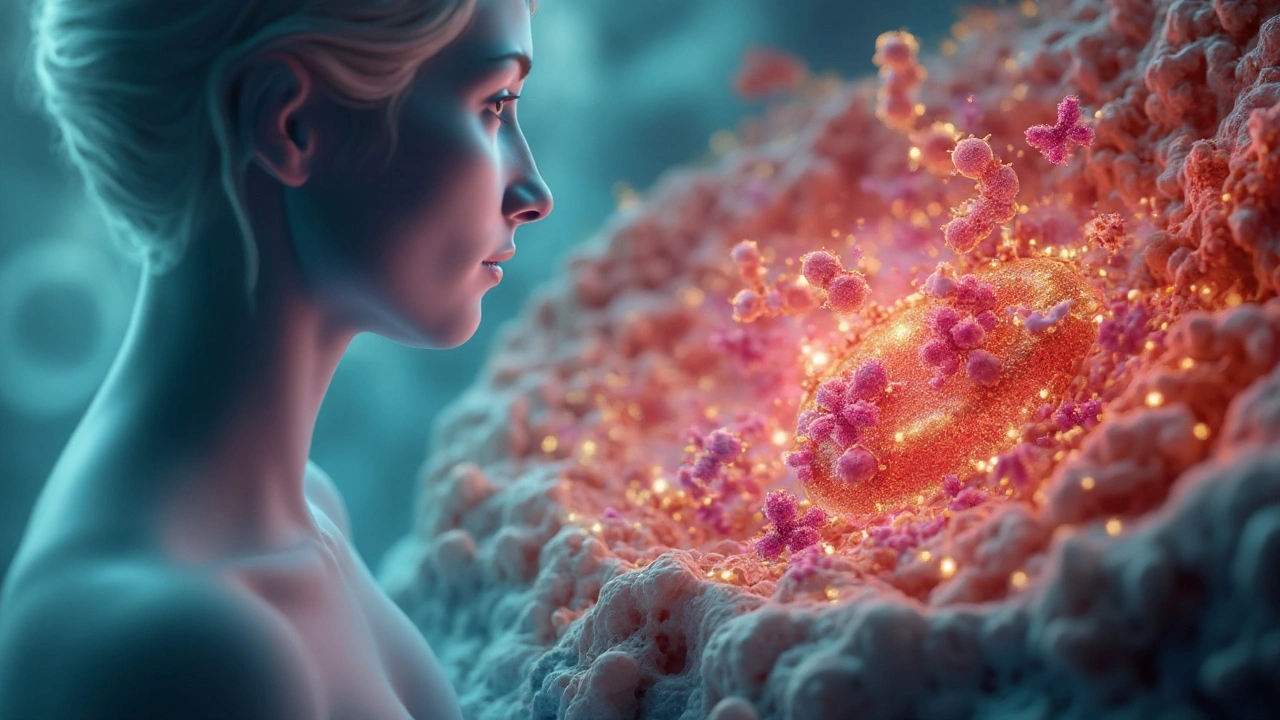Exemestane Mechanism of Action: Simple Explanation
Exemestane is a drug used mainly in post‑menopausal women with hormone‑sensitive breast cancer. It belongs to the aromatase inhibitor family, which means its job is to stop the body from making estrogen – the hormone that can feed certain breast tumors.
Inside the body, an enzyme called aromatase turns androgens (like testosterone) into estrogen. Exemestane fits into this enzyme like a fake key. Once it’s inside, it permanently disables the enzyme, a process called “irreversible inhibition.” Because the enzyme can’t work, estrogen levels drop quickly.
Why Lowering Estrogen Helps Breast Cancer
Many breast cancers have receptors that grab onto estrogen. When estrogen binds, the cancer cells get a growth signal and multiply. By slashing estrogen, exemestane deprives these cells of fuel, slowing or even stopping tumor growth. This effect is especially useful after surgery or radiation when doctors want to keep any remaining cancer cells in check.
The drop in estrogen also reduces the risk of new cancers forming in the breast. That’s why doctors often prescribe exemestane for several years after initial treatment – it keeps the hormone environment hostile to cancer.
Practical Points About Taking Exemestane
Exemestane is taken as a once‑daily pill, usually 25 mg. Because it works by permanently blocking aromatase, the body can’t quickly “undo” the effect, so estrogen stays low even if a dose is missed. That makes adherence a bit easier but also means side effects can linger.
Common side effects include hot flashes, joint pain, and mild fatigue. These happen because the body is adjusting to lower estrogen. Most people find the symptoms manageable, especially with lifestyle tweaks like cool clothing for hot flashes or gentle exercise for joint comfort.
If you’re on exemestane, doctors will regularly check bone density. Low estrogen can thin bones over time, so a calcium‑rich diet, vitamin D, and sometimes a bone‑strengthening medication are recommended.
Another key point: exemestane only works well in post‑menopausal women. In pre‑menopausal women, the ovaries keep pumping out estrogen, so the aromatase block isn’t enough. In those cases, doctors might use other hormone‑blocking strategies.
In summary, exemestane’s mechanism is straightforward: it slots into aromatase, disables it for good, and cuts estrogen production. This hormone drop starves estrogen‑dependent breast cancer cells, slowing growth and lowering recurrence risk. Understanding how it works helps patients know why they’re taking it, what side effects to expect, and how to manage them effectively.
Always talk to your doctor about any new symptoms or concerns while on exemestane. Regular check‑ups, a balanced diet, and staying active can make the treatment smoother and improve outcomes.
Exemestane Explained: How This Aromatase Inhibitor Works at the Molecular Level
A clear, evidence-backed breakdown of how exemestane shuts down estrogen production, who it helps, key trial data, dosing nuances, interactions, and side-effect management.

